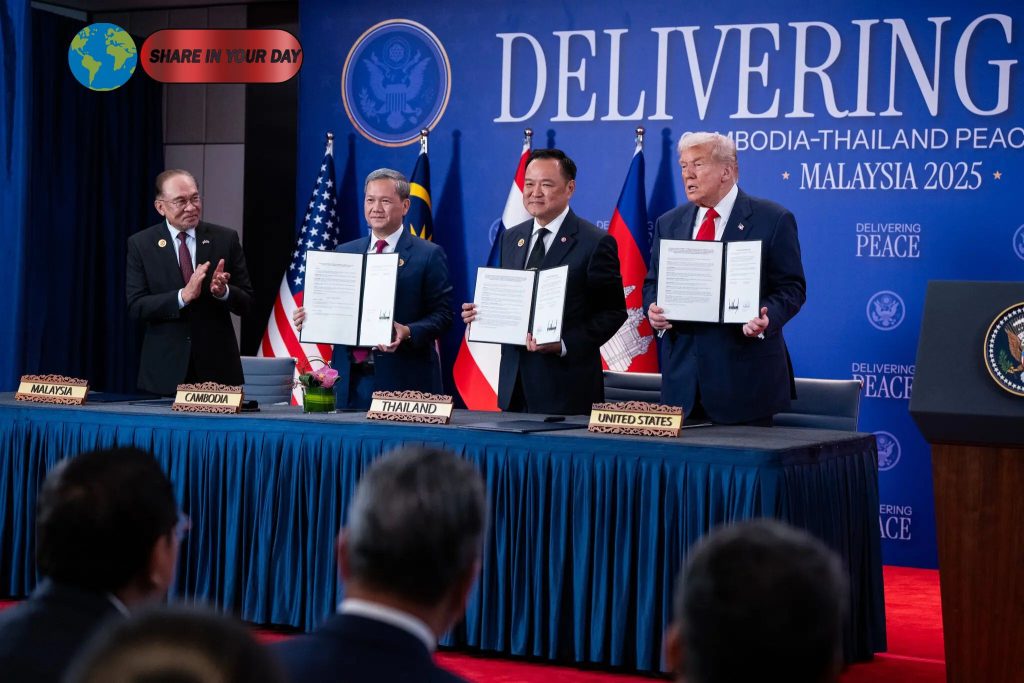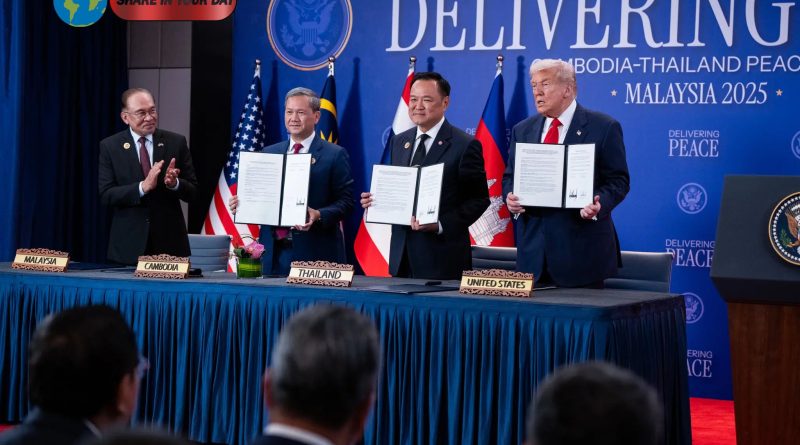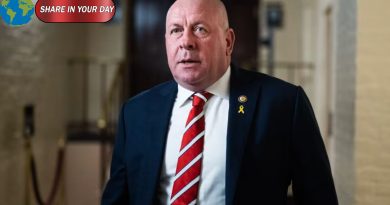President Donald Trump has set off on his first major Asia tour of his second term, at a time when the U.S. federal government remains shut down and global economic tensions are running high
Diplomatic front and centre

The journey commenced with a stop in Qatar during a refuelling break, where Trump met with Qatari leaders aboard Air Force One. His full itinerary spans stops in Malaysia (host to the Association of Southeast Asian Nations summit), Japan and South Korea, culminating in a face-to-face meeting with Chinese President Xi Jinping.
Economic and trade stakes
A prime focus of the trip is advancing a major trade deal with China. Trump told reporters he “thinks we’re going to end up having a fantastic deal with China — it’s going to be fantastic for the entire world.” Among the key issues: China’s purchases of U.S. soybeans, border controls on fentanyl-related chemicals, and export limits on rare earth minerals that are vital for advanced manufacturing.
Meanwhile, the U.S. is seeking large-scale investment commitments from allied Asian countries in exchange for tariff relief and trade cooperation.
Strategic messaging amid domestic pressure
The timing of the trip is notable — taking place while the U.S. government shutdown drags on. The optics suggest a two-pronged strategy: showcase U.S. leadership abroad while attempting to insulate the economy from domestic instability.
Risks and roadblocks ahead
- Commitment versus execution: While the tour’s announcements may appear bold, implementation and enforcement of trade deals—especially with China—remain challenging.
- Domestic politics: The U.S. shutdown adds a layer of vulnerability. Allies and partners may remain wary of commitments if Washington appears unstable.
- Underlying tensions persist: Trade is only one front. Geopolitical competition, supply-chain issues, and regional security concerns (especially in East Asia) are still unresolved.
Why this matters
For the U.S., success means stabilising trade relations, protecting key industries and reassuring allies. For China, a deal could ease pressure from U.S. tariffs and export restrictions. For Asia broadly, this tour signals a U.S. attempt to reassert influence in a region where China’s presence is growing.
As President Trump progresses through Asia, all eyes will be on how the staging turns into substance — whether the announced deals hold, and whether this tour reshapes his foreign-policy image or merely adds gloss.




